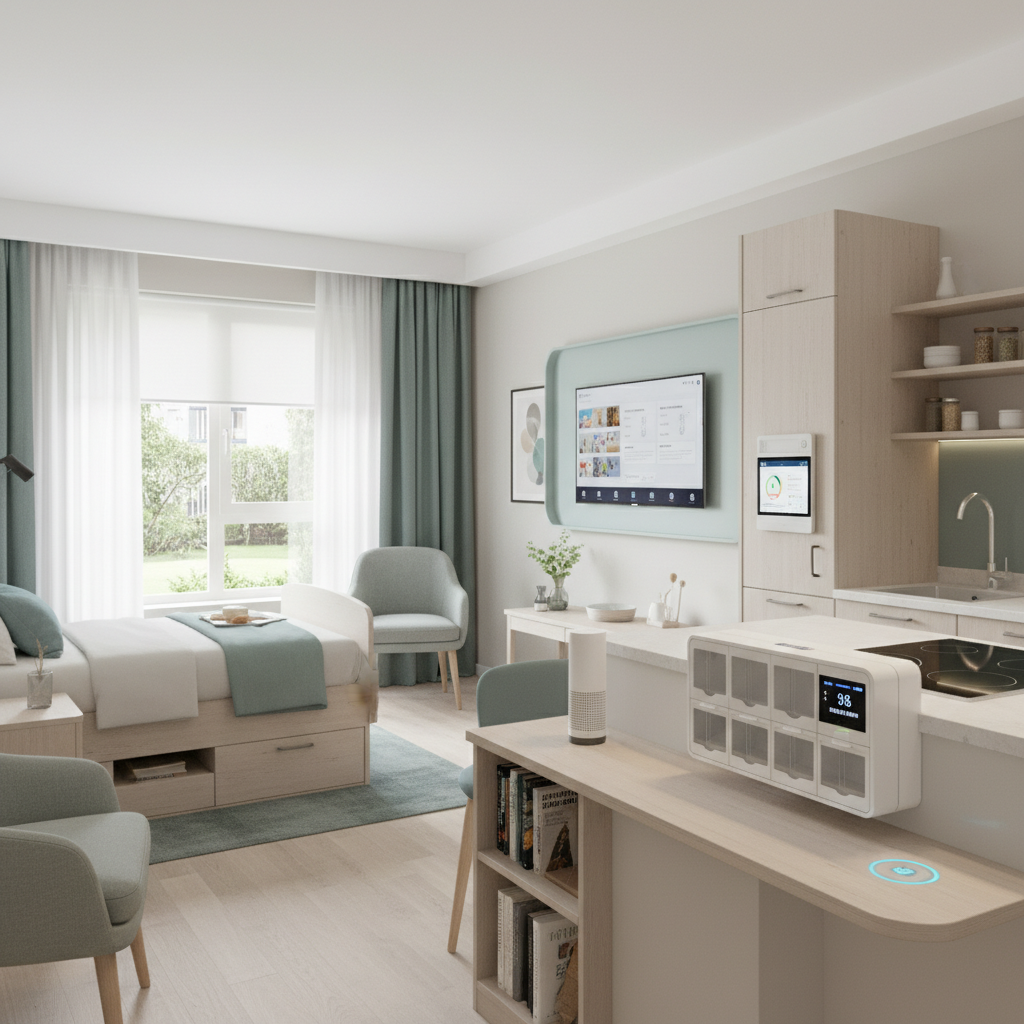
Sticker shock is real: in 2025, the median monthly cost of assisted living in the U.S. hovers near $5,000 and is climbing fast, putting traditional options out of reach for millions of middle-income seniors. But a game-changing trend is quietly reshaping the landscape: middle-market assisted living communities designed with affordability and genuine quality in mind. If you’re worried about care costs draining retirement savings—or dreading the thought of basic, bare-bones facilities—this is your must-read roadmap to the best of both worlds.
Why Middle-Market Senior Living Is Booming (and Why You Should Care Now)
The “middle market” refers to communities built specifically for older adults with too much income to qualify for subsidized housing, but nowhere near enough for luxury retirement resorts. According to industry experts, the number of middle-income seniors will almost double by 2029, exceeding 14 million—yet over half won’t be able to afford the typical assisted living price tag[7][2]. That’s driving a race among senior living operators to deliver sustainable, middle-market models that offer real value—without sacrificing safety, community, or essential care[6][1].
Key Features of Middle-Market Communities in 2025
- Monthly rents from $2,995 to $3,995—often 30-40% less than comparable high-end properties[1][3].
- Unbundled service packages: Pay only for the care and amenities you need, not a one-size-fits-all bundle[3].
- Emphasis on technology and design efficiency—think smaller but cleverly configured units, shared wellness spaces, and on-demand care[8][1].
- Blended models: Independent living plus on-site care, so residents can age in place as needs change[1][5].
- Secondary market focus: Many are popping up outside major metros, where land and labor are more affordable—think Lakeland FL, Columbia SC, and Central Florida[1][3].
Who’s Leading the Middle-Market Charge?
Several brands and operators are standing out in this new middle-market era. Here’s a look at what they offer, what you’ll actually pay, and why their approaches matter.

Mainstay Senior Living: Southeast’s New Value Leader
- Locations: 40+ communities with clusters in Florida, Georgia, North Carolina, South Carolina, and Tennessee
- Monthly rates: $3,500–$3,995 (vs. $5,000–$6,000+ at luxury peers)
- Unique features: In-house healthcare (rehab, home care, pharmacy), tech-enabled medication dispensing; expansion focused on secondary cities with low competition and high demand[1].
- Growth alert: In 2025, Mainstay is actively adding new units—meaning fresh availability, but also pent-up demand. Early application = better choice of rooms[1].
Innovation Senior Living: Florida’s Affordable Standout
- Locations: Five communities in Central Florida; expanding soon[3].
- Rates: From $2,995 for base assisted living (La Casa Assisted Living, Merritt Island); care services priced separately, so you control the total bill[3].
- What’s different? Flexible apartments (studios and larger units), meal program customization, and on-site memory care in select locations. They focus on acquiring and updating older properties for savings passed on to residents.
Presbyterian Homes & Services: Midwest’s Model of Scale
- Locations: Midwest region, growing through joint ventures and creative financing[5].
- Approach: Hub-and-spoke service structure, standardized units, and cost controls (linking rent increases to inflation, not market surges). Designed for long-term affordability and stability for residents.
How to Spot Middle-Market Value: A Step-by-Step Guide for Families
With new options flooding the market, here’s how to cut through the noise and find a genuinely affordable, high-quality fit for your loved one in 2025:

- Insist on Transparent Pricing: Middle-market operators typically post base rents and a-la-carte service fees up front. Watch for communities where “standard” care is included and extras (bathing, medication management, etc.) are priced per need—this lets you avoid costly bundled plans[3].
- Check for Flexibility: Can residents age in place as needs increase? The best communities allow seamless transitions from independent to assisted living, and even memory care, without requiring a disruptive move[1][5].
- Look for Integrated Services: Top contenders now offer in-house home health, therapy, and even pharmacy services—saving families time and money while ensuring care is coordinated[1][5].
- Prioritize Locations in Secondary Markets: Consider communities in smaller or less crowded cities—costs are typically lower, and there may be less competition for rooms[1][3].
- Evaluate Amenities Honestly: Expect fewer frills than luxury properties—think practical, well-designed spaces rather than grand lobbies or gourmet dining. But look for essentials like group activities, fitness, and social engagement, which drive resident happiness and well-being[2][5].
Real 2025 Price Anchoring: What to Expect—and What to Avoid
| Community/Brand | Location | Base Monthly Rent | Key Features |
|---|---|---|---|
| Mainstay Senior Living | Southeast US | $3,500–$3,995 | In-house care, tech upgrades, aging in place |
| Innovation Senior Living (La Casa) | Central Florida | $2,995+ | Flexible units, unbundled services |
| Presbyterian Homes & Services | Midwest | Varied, inflation-linked | Scale, stability, standardized units |
Expert Tips: How to Secure the Best Value Before Units Vanish
- Apply early: Demand is surging and new units fill up fast, especially in high-penetration secondary markets[1].
- Ask about waitlists and upcoming expansions: Get on lists now to lock in lower introductory rates before prices inevitably rise (price anchoring)[1][3].
- Request a detailed service breakdown: Insist on a transparent menu of care and amenity pricing—avoid communities with vague or bundled fees.
- Leverage social proof: Seek out resident testimonials, online reviews, and occupancy rates. High renewal rates are a powerful sign of satisfaction and value.
Don’t Miss Out: The Middle-Market Window Won’t Stay Open Forever
With the first wave of tech-savvy Baby Boomers entering the market, operators are racing to add capacity—but with construction and labor costs rising, today’s prices are likely to be the lowest you’ll see for the next decade[1][4][10]. If you’re considering a move in 2025, start your search now, prioritize middle-market leaders, and act decisively to secure the best rates and options before they’re gone.

Ready to Take Action?
Start by compiling a shortlist of communities in your target region—focus on Mainstay, Innovation, Presbyterian Homes, and similar brands with transparent pricing and proven operational models. Schedule tours, ask for itemized cost breakdowns, and compare offerings using the criteria above. With middle-market solutions finally taking center stage, the opportunity for affordable, high-quality assisted living has never been brighter—or more fleeting. Don’t let the best options slip away.


